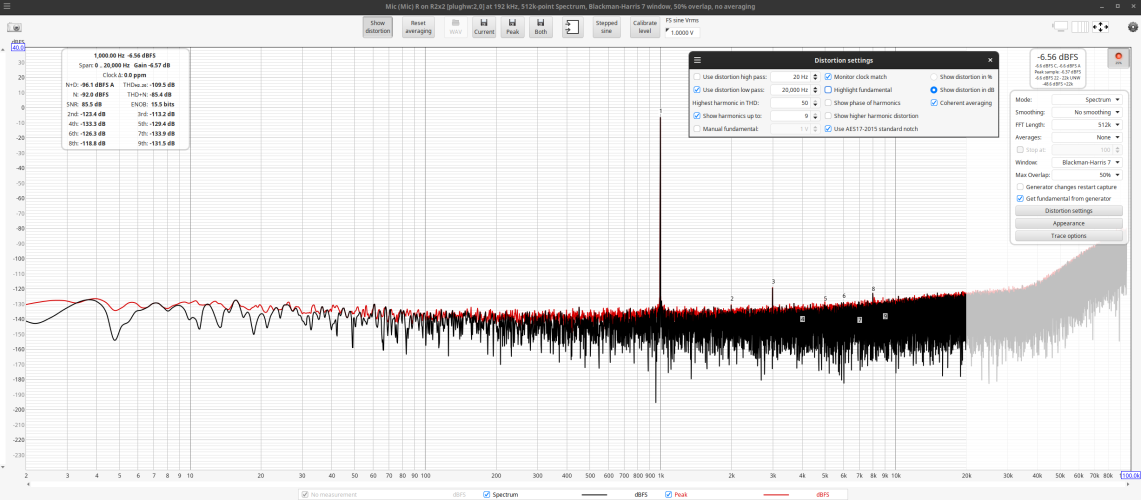The third-order products, 2f2 – f1 and 2f1 – f2, are a major concern because of their proximity to the fundamental frequencies
If your peak playback level is say 85dBSPL then the IMD of the topping, even where it rises at 0dBFS, would be at -10dBSPL. How are you ever going to hear -10dBSPL even in a world class anechoic chamber with no other sound, let alone when you’ve got music playing at 85dBSPL? Your HPs wouldn’t even be able to reproduce that IMD and how is no IMD at all any sort of concern, let alone a “
major concern”? That’s ridiculous!
No it’s not, it’s good for a frequency response graph but not for IMD. Don’t you know the difference between a freq response graph and an IMD graph?
a good question probably would be if the additional harmonic distortion of the dac shows up on some loudspeaker in room measurements ... tho i think the umik-1 has far to huge noisefloor for that
Sure, IMD that your speakers probably aren’t even reproducing will show up in your room with a noise floor 100-200 times higher, when reproducing music recordings with a noise floor 100-200 times higher and when using a measurement mic that’s inaccurate by about 50dBSPL. Again, that’s ridiculous!
-3,6db to avoid clipping and we got H3 at -102db (so 99db of "nothing" between signal and H3)
-10db to avoid excessive IMD and we got H3 UNDER the noisefloor at -125db (so we got !!! 115db !!! of "nothing" between signal and noise floor/H3)
What “nothing”, do you live in a world class anechoic chamber where you never replay music recordings?
How is RMS a good indication here? we also hear peaks, no?
You mean apart from the fact that what we hear is far more closely related to RMS level than Peak level?
if i go by what objectivist say "keep it at near full volume minus 1-3db for intersample clipping" i dont get the best performance.... i hope its clear now what im saying
Yes, it’s clear what you’re saying and has been all along. You’ve purchased a $400 ADC/DAC that has worse IMD performance than a $9 Apple dongle, no better performance than a prosumer ~$80 ADC/DAC and a way worse performance than a $200 Topping DAC. But, you can overlook/justify the fact you’ve been scammed by a snake oil company because it has more of a “straight line” looking IMD graph, which you think is prettier to look at!
Well we would need to ask the question what is more important/audible, specially at these low levels, noise or harmonic distortion
Not “we” but you, because apparently you can’t work out for yourself: “
What is more important/audible” the say 30-40dBSPL noise floor of your listening environment plus the noise floor of your recording which is somewhere between 25-50dBSPL or the IMD at -10dBSPL that your HPs probably aren’t even reproducing and definitely is not audible even if your HPs were reproducing it?
Again, it is completely impossible to be an audio engineer that does not know any of the above, seemingly cannot work it out but instead, just makes mountains out of molehills (so tiny they can’t be seen or don’t even exist) and then keeps arguing about it despite the obvious facts. And, how is that anything other than trolling? Lastly I’m curious, why would an audio engineer, apparently at a professional/commercial studio, want a 2x2 prosumer ADC/DAC?
G






















